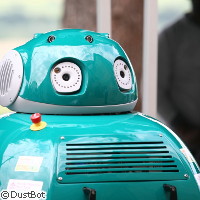Easy cleaning the robotic way
The vision of a society in which robots accompany the elderly on trips and help take out their rubbish is closer to becoming a reality than you might think. The EU has funded a new generation of robots that can provide a range of services to assist their human counterparts. The scientists behind the innovative technology provided onlookers in a Spanish neighbourhood with a demonstration of just what the multi-talented robots DustCart and DustClean can do, including their ability to sense obstacles and navigate around them. The DustBot project was funded with almost EUR 2 million under the 'Information society technologies' (IST) Thematic area of the Sixth Framework Programme (FP6). The aim of the project was to design, develop and test a robotic system to improve the management of urban hygiene. The presentation, that took place at a railway station in Bilbao, represented the culmination of work begun in 2006 by a team of scientists headed by Italy's Scuola Superiore Sant'Anna. At the event, the public was introduced to the two DustBot robots: DustCart, a robot designed to interact with its user and collect on-demand waste, and DustClean, a robot measuring less than a metre high that removes dirt and dust from the street. The robots can clean open and closed surfaces, and even hard-to-reach places. In addition, they can control air quality in real time, a function developed as a result of built-in ozone and carbon monoxide sensors. 'These robots are the solution for cleaning areas of difficult access and for the collection of rubbish at the very front door of, above all, persons who have mobility problems when moving the rubbish to the communal waste containers,' said Iñaki Inzunza, Director of Business at Tecnalia Technological Corporation in Spain. Thanks to specific functions developed by the team, the robots are able to orientate themselves, navigate, and communicate with other machines, making them collaborative, autonomous and multifunctional. This means that the robots' services can be applied to many other areas too. For example, based on information on a map, the DustBot robots can also monitor large spaces, act as guides in shopping centres and museums, transport goods, and assist people with special needs both inside and outside their homes. As partners in the project, the Tecnalia team was responsible for ensuring the robots would go about their tasks without hitting obstacles along their path. The technology used was achieved through a combination of infrared and ultrasound sensors and a laser scanner. To allow users to communicate with the robots, the scientists at Tecnalia also embedded wireless systems between the sensors and the various modules that include obstacles avoidance, air quality, location and navigation.
Countries
Spain



